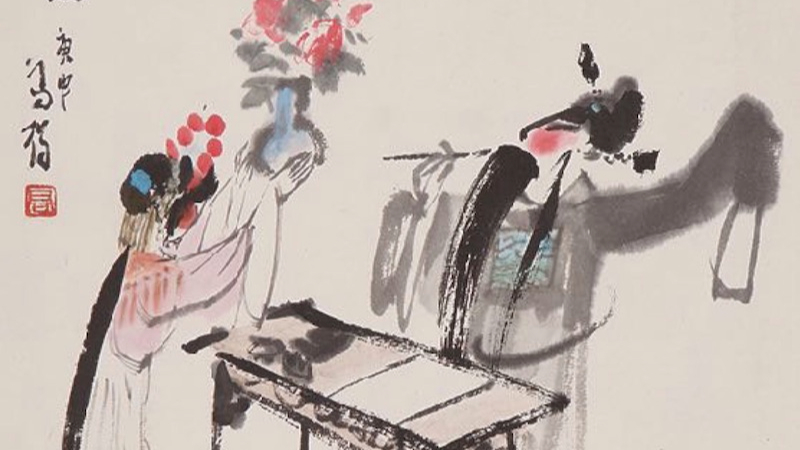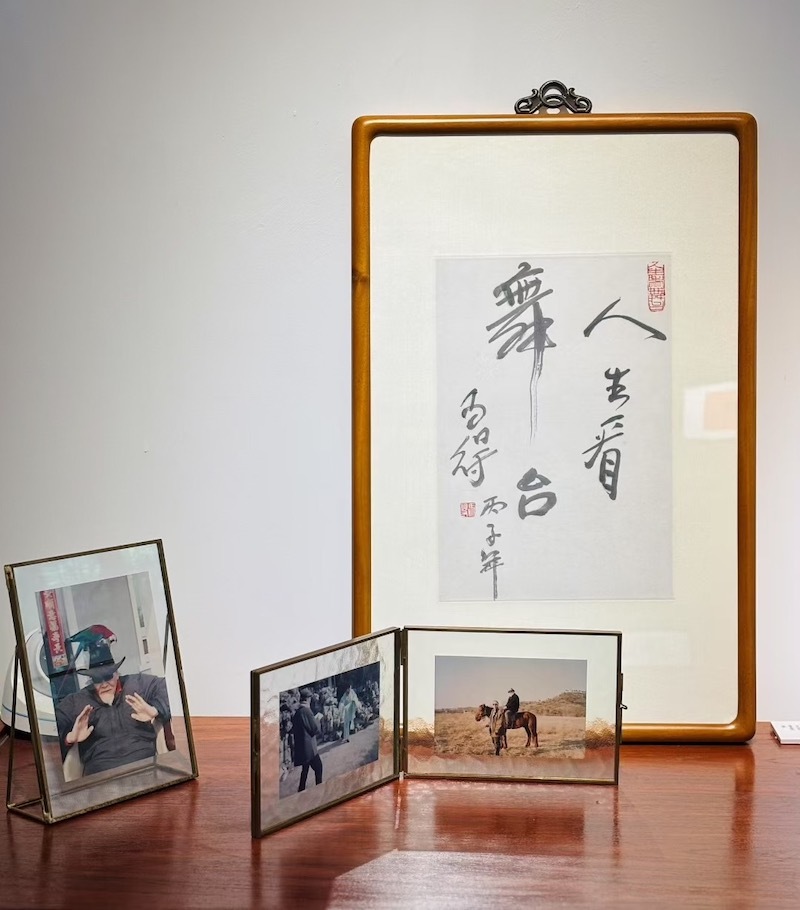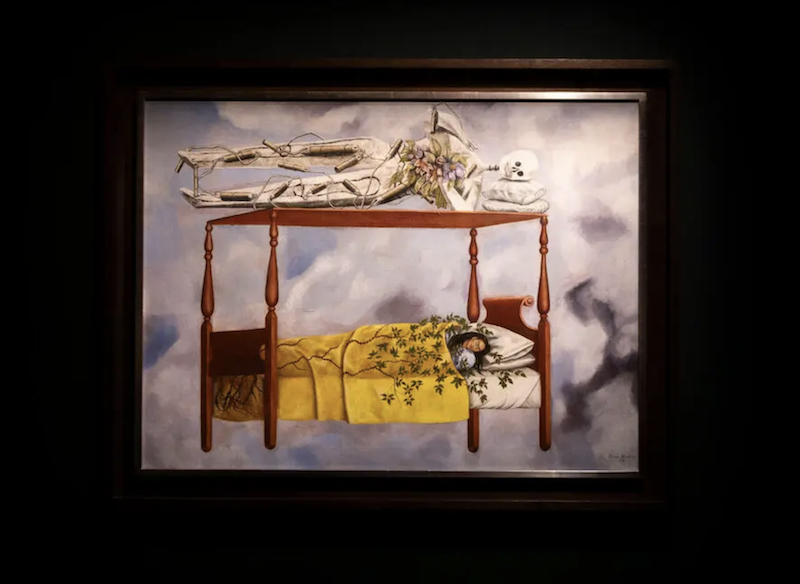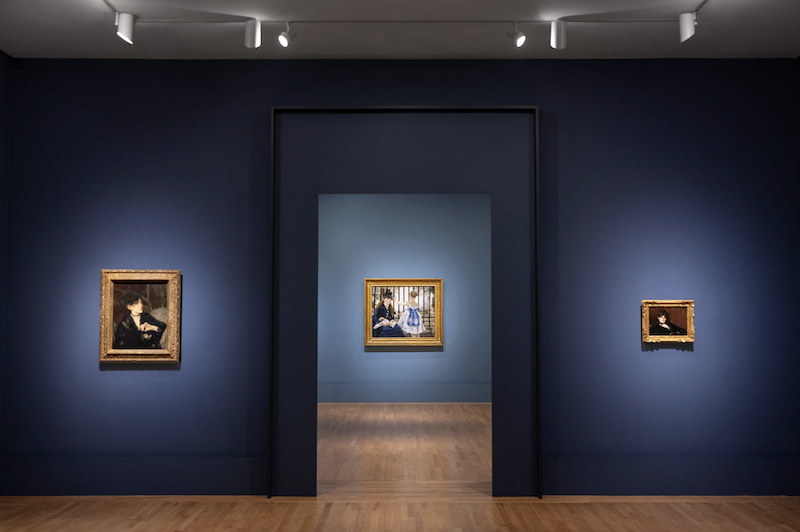
Opera figure painting has flourished in modern times. Guan Liang, Gao Made, and Han Yu are collectively known as the "Three Masters of Opera Figure Painting." The renowned writer Wang Zengqi once described Gao Made as "a painter of dreams." Recently, the exhibition "Innocent Wonders: Gao Made in the Pine Shade" opened at the Songyin Art Space in Shanghai. It showcases dozens of opera figure paintings by the master of opera figure painting, Gao Made (1917-2007), along with numerous representative works and manuscripts on animals, landscapes, and figures, offering a glimpse into Gao Made's dreamlike stage. This marks the first concentrated exhibition of Gao Made's works in Shanghai in nearly three decades.

my country's opera culture boasts a long and rich history, encompassing a rich variety of forms. The paintings associated with it are known as "opera paintings." While opera figure painting has existed since ancient times, it wasn't a traditional mainstream genre. However, in modern times, paintings based on opera themes have been further developed by several prominent artists. Among these painters, Gao Made is a prominent figure. Along with Guan Liang and Han Yu, he is known as one of the "Three Masters of Opera Figure Painting." His work is rooted in a rich cultural heritage, inheriting the freehand brushwork tradition of Chen Laolian and Fu Baoshi, yet capturing the essence of Peking Opera through comic-like exaggeration.

Gao Made is creating
Gao Made, born in 1917, rose to fame early in his career as a cartoonist, winning the China Golden Monkey Award for Cartoons and the UNESCO Asia Book Prize. After the victory of the Anti-Japanese War, Gao Made worked in the art department of the Xinhua Daily. At a time when theater troupes from across the country were performing in Nanjing, Gao Made worked daily, sitting at the front of the theater, sketching constantly to illustrate for the newspaper. This immensely trained his eyes and hands, laying a solid foundation for his later career as a professional in opera painting.
In the 1960s, Gao Made, fascinated by Chinese opera, began experimenting with depicting opera characters through traditional Chinese painting. He officially dedicated himself to this art form after transferring to the Jiangsu Academy of Chinese Painting in 1980. He admits he wasn't trained in a formal school, nor did he have a teacher: "If I were to cite a teacher, they would be tradition and life itself." Driven by a genuine love for the subject, he immersed himself in the world of stage and paper, sketching thousands of figures in countless poses, a career he has dedicated decades to.

Gao Made depicts opera actors
Having spent half his life painting operas, Gao Ma was able to depict dreams through his playful paintings, conveying emotions with brush and ink, ultimately achieving a perfect fusion of freehand brushwork and narrative. He spent decades painting "The Peony Pavilion," his lines as smooth as gossamer and his pale colors evoking a dreamlike quality. Wang Zengqi called him "a painter of dreams." He painted figures from behind, meticulously examining the scenes within the operas. Wu Zuguang remarked that his opera paintings "excel in beauty."
Ye Qianyu, a senior painter, once commented on him: "Looking at Ma De's opera sketches, I find his uniqueness in meticulously tracking the development of the plot and extracting key images, rather than simply capturing fragments or individual moments in isolation. Another characteristic is his ability to capture the unique identities and personalities of minor characters, such as scouts reporting military intelligence, corrupt officials in distress, matchmakers sharing romantic stories, and small soldiers doing somersaults—each with exquisite precision and immersion." Hua Junwu added, "Ma De is a veteran cartoonist. His opera paintings show his understanding of opera, as the expressions and movements of the characters in his paintings are something only an expert can capture. His approach is different from the average sketch of an opera, which focuses solely on the form. Ma De also uses ink and wash, and his paintings are rich in flavor, requiring only a seasoned artist to achieve this. His lines are concise and fluent without being slick, and his ink and wash drawings and character sketches all have a cartoonish quality, making him truly unique in China."

At the exhibition, Gao Made's old photos and his book "Life on Stage"
The Paper has learned that the exhibition, "Innocent Wonders: Gao Made in the Pine Shade," is both a tribute to Mr. Gao and a nod to his passion for both "painting opera" and his love of it. Gao Made's granddaughter, Gao Gege, told The Paper, "In addition to opera paintings, the exhibition also features some interesting sketches of non-opera characters, such as landscapes, squirrels, ducklings, and the lilacs that grew in my grandfather's home, aiming to challenge our understanding of opera."

Exhibition site

Exhibition site
Opera painting requires precise depiction of the figures' forms and movements, and a vibrant aesthetic. Gao Made's operatic figure paintings aren't literal stage sketches, but rather focus on the characters themselves. Compared to Guan Liang, who favored male and female roles, Gao Made focused on depicting romantic relationships, as seen in classical operas like "Romance of the Western Chamber," "The Peony Pavilion," and "Records of the Western Garden." His operatic paintings resemble cursive script, eliminating unnecessary brushstrokes and remaining anchored by a few lines, delineating the figures' forms and emotions. Gao Gege told reporters, "My grandfather's figure paintings were deeply entwined with ambiguity—the kind of expression that's unclear, so much of it is a personal experience. He sought to convey the depth of feeling through simple brushstrokes, rather than simply presenting it directly." For example, in the exhibition's work "The Legend of the White Snake at the Broken Bridge," the White Snake's back is depicted with a few lines, as she turns away and weeps in her hands. In "Jia Baoyu Reading the Romance of the Western Chamber," the artist reveals the hidden love between two people.

Exhibition site, Gao Made's works

Wenjun Listening to the Zither

Dream of the Red Chamber: Jia Baoyu Reads the West Chamber
For a painter, eyes and hands are paramount. However, Gao Made lost his right eye due to a power outage at the hospital during surgery. It's said that Gao Made calmly accepted the situation and comforted his family, saying, "God is kind; he spared me an eye." In his early years, Gao Made suffered from lung disease and found solace in reading Lao Tzu's books and depicting his stories. Gao Gege told reporters that "Lao Tzu Emerging from the Mountain" in the exhibition is a favorite of hers, as the spirit of the painting resonates closely with Gao Made's.
Gao Ma De was born in the Year of the Horse, but he painted many cows. In his time, many painters used cows to represent auspiciousness and other concepts. Gao Gege said, "Grandpa painted many cows. Cows are a very reassuring presence. However, the cows he depicted were mostly based on his own observations. Because he lived in the countryside at the time, he captured images of herding children and cows, as well as fishermen and other related subjects."

At the exhibition, Laozi came out of seclusion

Old cow and calf

At the exhibition, Gao Made's monkey painting
In a display case, the organizers presented a batch of Gao Made's sketchbooks, which also confirmed this point of view. It is said that when Gao Made passed away, his family left behind hundreds of sketchbooks, most of which contained his observations and sketches of people. "Grandpa is like us writing diaries. He is self-studying in life and daily life. He has not been exposed to any Western or domestic institutional art training, but relies on self-study. He feels that many things are in daily observations and in things other than painting, such as what he reads, what he absorbs, and who he talks to. All of these contents will be concentrated on artistic techniques and artistic spirit." Gao Gege said, "An interesting thing about grandpa is that when he has inspiration, he will draw on the back of things that we don't need, such as the back of medicine packaging boxes. He is a habitual recorder, and he likes this state of daily recording."
The Paper saw at the exhibition that a number of works depicting Miao villages were derived from sketches, which are vivid and concise, such as "Kitchen" and "Miao Family Field". The lines, use of water, ink, color and composition are very distinctive, and the brush and ink are lively and complement each other, full of life.

Kitchen

On the Miao Family Field

Come and Sit Down

Gao Ma De's sketchbook on display in the cabinet

Gao Ma De's sketchbook on display in the cabinet
Gao Made's Water Margin characters, created in the 1980s, are small and exquisite, no bigger than a palm. He is said to have imitated Chen Laolian's Water Margin Leaves, but also to have made some breakthroughs. Pan Dun, director of Songyin Art, said, "Chen Laolian's Water Margin Leaves available today are primarily woodcuts, all in black and white. Gao Made's Water Margin characters, on the other hand, are rendered in light colors. He also depicted many Earthly Evil Star characters, such as Zhu Gui, whose attire is very interesting. He depicted Li Kui in the same attire he wore when he accompanied Song Jiang into Tokyo as a fortune teller. The proportions of the dwarf tiger, Wang Ying, are also very well-crafted."


Gao Made's paintings of Water Margin characters
Regarding Gao Made's art, Gao Gege said, "I think both his works and his sketch diaries are valuable, exploring how these works developed into his artistic expression. His evaluation is very broad. He always favors the natural, real, and vital aspects of art, rather than the standards associated with the world of fame and fortune. My aunt wrote an article called 'Ma De is Not in the World of Vanity and Fair.' Why can his paintings have such a fairy-like quality and such a pure quality? Because he is not in the world of fame and fortune. His art requires nature, the freedom that is not bound or framed."

Borrowing Boots

Three Kingdoms: Going to a Meeting Alone
The exhibition will run until September 20th.

